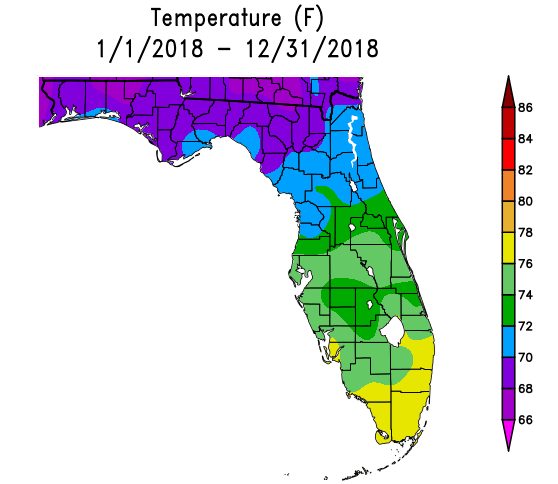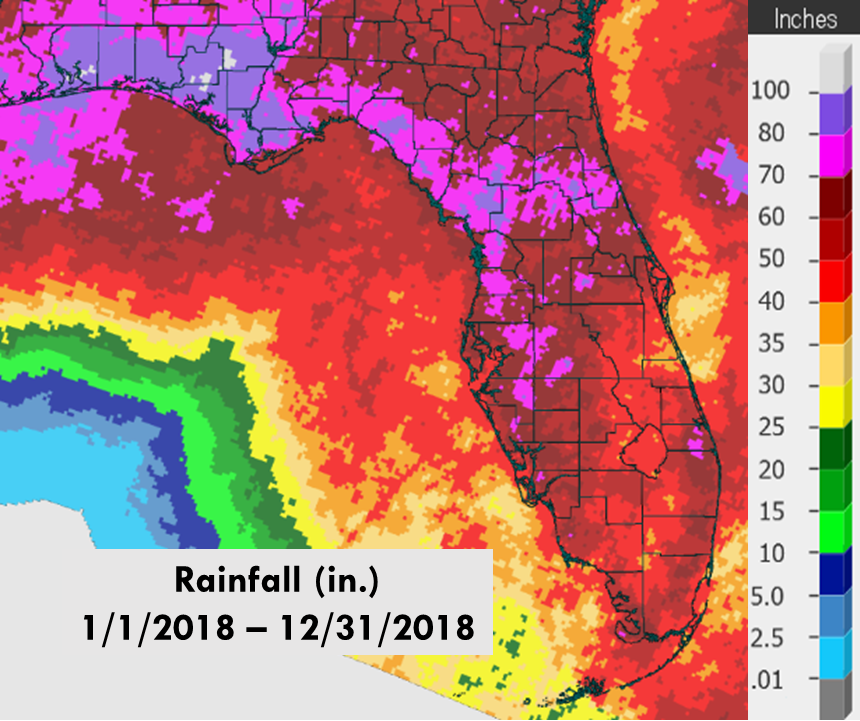Welcome to the first blog in the Florida 101 series! This series of blogs will be geared towards introductions to topics that are important to understand when living in coastal Florida. Whether you are one of the 1,000 new residents who moves to Florida every day or have been living in Florida for your whole life, we hope you will learn more about coastal living in our state. Some of the topics you can look forward to in coming weeks and months include Florida weather patterns (today!), tides, waves and beach dynamics, shoreline stabilization, beach safety, hurricanes, storm surge, estuaries, fishing and boating in Florida, algae, protected species such as manatees and sea turtles, and tips on being a Florida-friendly resident.
Temperature
Although often people think of Florida and think “tropical,” only south Florida has tropical weather, and the rest of Florida is considered sub-tropical.
Here in Volusia County located on the east coast of Central Florida, the coolest weather is in January, with an average of 59 degrees, and hottest in August, with an average of 83 degrees (data source: NOAA)
In northern Florida, winter freezes are much more common and affect which types of plants you can grow. Make sure that you choose plants for your yard that are the appropriate hardiness zone for your area to help ensure they survive and thrive!

Water temperatures and the Florida Current
The ocean temperatures are affected by how far north or south you are located, but they are also affected by the Florida Current. Florida Current brings warm weather front the south coast of Florida to the north, connecting to the Gulf Stream. It is only about 10 miles offshore in Miami, but about 60 miles offshore from Flagler Beach. This contributes to how much warmer the water in Mami stays in the winter compared to beaches north of Cape Canaveral.
Rainfall
Florida has seasonal differences in rain with a dry season in the winter months and a rainy season in the summer. The monthly rainfall in Volusia County averages 2-3 inches in the winter months (November-April) and 6-7 inches in the summer months (June-September), with May and October being transition periods. The whole state sees a similar seasonal pattern, although there are regional differences. South Florida and the gulf have much higher rainfall averages in the summer months, with 8-10 inches of rain per month! However, northern Florida has smaller seasonal ranges. Find your closest station for average rain and temperature with NOAA’s US Climate Normals Quick Access tool.


Sea breezes and afternoon thunderstorms
Along the coast you will find that the mornings typically have light, offshore winds, and then by midday stronger onshore winds develop. These afternoon winds are called a sea breeze and develop due to the warmer land onshore which heats up more quickly than the air over the ocean and causes a low-pressure system. The cooler, denser air over the ocean moves onshore to fill in the space left by the rising low-pressure system. When this warm air rises and condenses, it also leads to our famous Florida summer afternoon thunderstorms that seem to pop up out of nowhere!
Thanks for learning with us today and be on the lookout for the next Florida 101 lesson on tides!
 0
0
